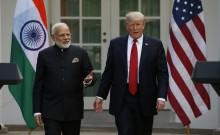
India is aiming to become one of the top five manufacturers of military equipment in the next 10 years according to a policy which will be unveiled next month. The final touches are being given before it will be placed before the Union Cabinet for approval.
According to officials, the main focus of the policy, named defence production policy (DPP-2018), will be to invest resources for developing key technologies needed to manufacture platforms like fighter aircraft, attack helicopters and other weapon systems indigenously.
The government has identified 12 platforms which need to be designed, developed and manufactured indigenously. These include fighter aircrafts, warships, land combat vehicles, medium and light helicopters, missiles, artillery guns, small arms, ammunition and explosives, electronic warfare systems, night fighting aids and surveillance systems. Private as well as public sector will be actively involved in all projects.
According to the draft of DPP, by 2025, the government is eyeing a turnover of Rs 1,70,000 crore in military goods and services.
India remains the largest importer of arms in the world for the last five years and imports shot up by 111% in that period compared to 2004-08.
All the major platforms like planes, ships, tanks etc which were imported in the last 60 years will be developed and manufactured in the country according to DPP.
India hasn't been able to develop a weapon as basic as a rifle for its soldiers, which is glitch free and comparable to the best in the world, leave alone complex machines such as fighter planes and transport aircraft among others.
In the last four years, India signed 187 contracts worth Rs 2.40 lakh with both foreign and domestic manufacturers for supply of weapons and other equipment but procedural delays have ensured that the procurement process hasn't begun in many cases.
The DPP will also contain a road map to simply the procurement process by doing away with many approvals needed.
Another objective enshrined in the draft policy, released in March, sets a goal of exporting military equipment and services worth Rs 35,000 crore by 2025.














